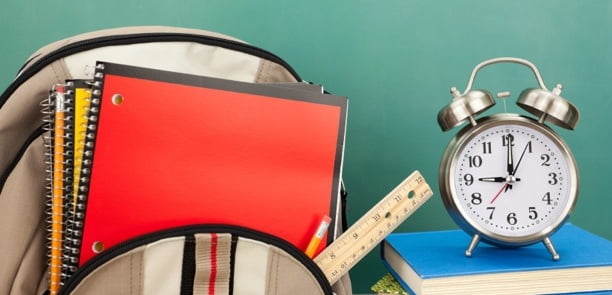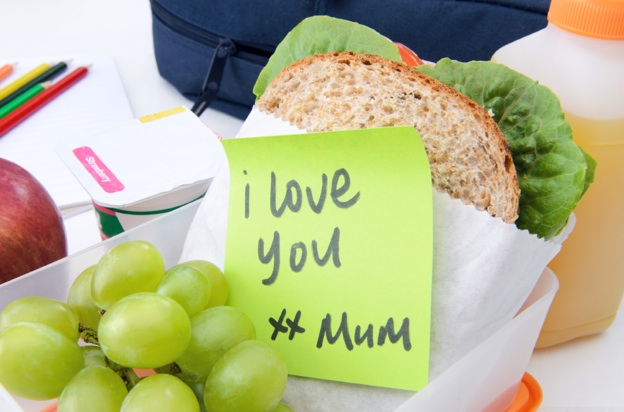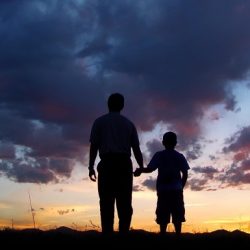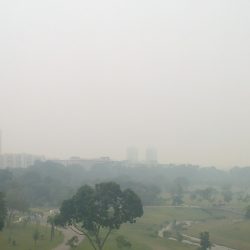SingaporeMotherhood | Preschooler & Up
June 2013
Primary 1: How is it Different from Preschool?

“Dear Mr Pig, I am feeling excited because I am going to the zoo tomorrow!” My daughter, who started Primary 1 this year, had written. Under her words were a reply: “I want to visit the zoo too! My friends are there.”
Who could be my daughter’s new pen pal, I wondered. It turned out that her P1 English teacher had asked the children to write to their music class mascot, Mr Pig, and the teacher had replied to each letter. This, I realised, was a new form of learning that my daughter was experiencing, one that was interactive, involved the student directly, and that made learning extremely interesting! Primary school, my daughter was discovering, was very different from preschool.
[banner][/banner]
Hands-On Creativity in Classrooms
In primary school, everything is different from preschool. There are no teachers complimenting your child on her new pair of sparkly, pink shoes. There are no teachers serving snacks or meals right to your child’s table. All the teaching-and-learning processes are conducted in a more regimented manner. When it comes to feeding, cleaning, purchasing, and packing, it’s up to the child to do it all himself or herself.
But this does not mean that there is no fun. Indeed, classrooms in most primary schools are bursting with creativity. A few weeks after a ‘Learning Journey’ (what we used to know as an excursion) to the Singapore Zoo, my daughter and her classmates were asked to bring some finger food to class.
As it turned out, it was Mrs Singh’s birthday that day. Mrs Singh? She was a character in a story that the children in class were creating together. In organising this birthday party for Mrs Singh, the children also learnt how to write invitation letters – which they penned to the other school teachers to invite them to Mrs Singh’s party. How fun!
Schoolbag Management
Primary school years are filled with routine processes to instill a sense of independence and responsibility in children. It starts with the Class Timetable, which each student has to learn how to decipher if he wants to know which books to bring on which day.
Most schools allow the students to keep books they will not need in the class cupboard, or underneath their desks. Even then, schoolbags are heavy. It is not unusual to see a tiny child bowed under the weight of his schoolbag as he makes his way from transport to class, or home.
Generally, the important things (apart from the day’s textbooks, exercise book and files) that have to always be in a school bag are: pencil case, school diary and a wallet.
Managing Appetites
Since primary school hours are longer than preschool hours (generally from 7.20 am to 1.30 pm for a single session school), most schools allow a 10-minute in-class power snack break between recess and going-home times. Pack your child a non-crumbly snack to eat during this time, or let him buy something from the canteen during recess to bring back to class and consume during this break.

The first taste of financial freedom can lead to dizzying spending sprees in school canteens and bookshops. Advise your child on what to do with his allowance, how to spend it wisely, and the importance of saving. Teach your child simple tips: like filling up his water bottle at the school’s water coolers instead of buying soft drinks or vending machine drinks.
Weekly Testing
If your child’s preschool did not organise spelling exercises, these weekly tests will be new to him. There is no need for undue worry. Primary 1 children are not expected to know words like albumen (the white part of an egg), odontalgia (a really fancy word for toothache) or prospicience (foresight).
The Ministry of Education (MOE) actually has a guideline regarding appropriate words to include in P1 spelling lists. Some examples from three primary schools’ spelling lists: animals, sheep, frog, cow, pig, duck, farmer, noisy, sleep, concert, grunts, fierce, croaks, can, sheep, snout, bark, quacks.
Acronym Activities
You may hear primary school acronyms like PAL, STELLAR, and CCA being bandied about. Don’t worry, these have nothing to do with work and everything to do with fun.
The Programme for Active Learning (PAL) is a new initiative which the MOE introduced in 2010 to P1 and P2 students. The aim of PAL is to let Primary 1 and 2 pupils discover new interests as they learn new skills. While doing that, they also build character. PAL takes places over two hours each week, and includes sporting and outdoor activities, as well as visual and performing arts. Best of all, it takes place during school hours!
A Whole New Culture for Parent and Child
Students in primary school are being trained to remember what they are expected to do, and to be accountable for their own actions. Teachers do not spoon-feed parents with handwritten messages in communication books as in preschool; neither do they text-message parents with details of a child’s day in school.
Your child is expected to write down her daily homework in her school diary, An example from my daughter’s diary: “Read textbook CL pg 40 to 41, Maths workbook pg 86”. Other information such as forms to sign, files or extra money to bring may not be written in it. While we’d love our children to be able to remember all this information and relate it to us when they return home from school, chances are, your seven-year-old will have forgotten most of it once the school day ended. Therefore, it would be useful for parents or guardians to network with other parents to stay in tune with all the going-ons. An additional perk from this? You expand your social network!
But For Now…
Your child is still in Kindergarten for the second half of this year, and will only enter Primary school next year. There is no need to panic. He will do a lot of growing up within a short period of time during his first year of primary school, and he will be fine. For now, let your child take it easy, and simply be a child.
All content from this article, including images, cannot be reproduced without credits or written permission from SingaporeMotherhood.
Follow us on Facebook, Instagram, and Telegram for the latest article and promotion updates.





